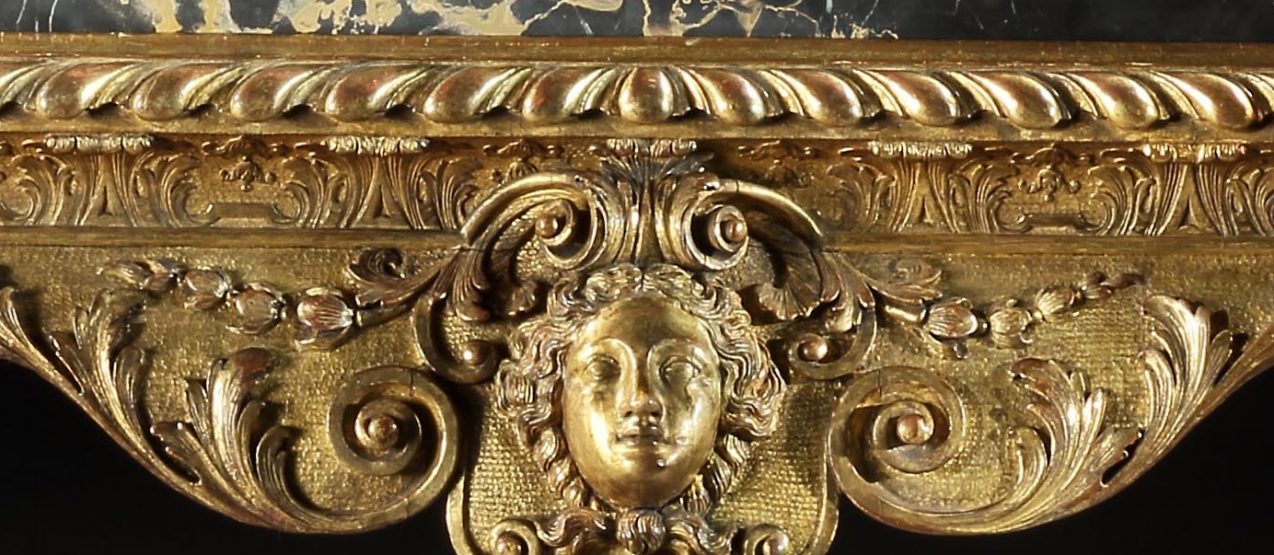There is no doubt that giltwood furniture is an expression of grandeur and luxury. The golden hue of these pieces comes from the application of real gold leaf—a highly valued material both then and now. When it comes to buying antique giltwood furniture for your collection, there are many different considerations to keep in mind, many of which come down to personal preference.
Origins of Giltwood
The gilt gesso technique appeared in England at the end of the seventeenth century with the work of Jean Pelletier, a Huguenot craftsman who received royal patronage at Hampton Court and Kensington Palace. James Moore, a royal cabinetmaker working in the early eighteenth century, expanded on this technique with increased drama and exaggeration to the carving. Throughout the Georgian era in the eighteenth century, gilded furniture was highly prized as some of the finest furniture available as it emulated the ever popular taste for French style and décor.
The Technique
Gesso is a type of plaster that is prepared of finely ground chalk, applied onto the wooden surface in a series of layers—at least fifteen layers were needed to achieve the desired thickness. Once dried, the craftsmen could cut into the new surface to create different designs. When the designs were complete, the gilding could be applied. To gild the surface, a red clay ground, known as bole, would be spread onto the surface to prepare for the laying of the gold leaf.
Buying Giltwood
When looking for gilt furniture, it is important to look at the cabinetry first, as this is the base on which the gilding and all other decoration is applied. The quality of the carving is of utmost importance as this is the surface that is gilded. The depth and crispness of carving is often a good indication of the craftsman’s skills as it demonstrates his ability to create dynamic and energetic designs that are accentuated when applied with a gilded surface.
Once you find a model or design that you like, the gilding should be examined closely. Due to the multiple stages required to create a gilded surface, several hundred years of wear can sometimes reveal the earlier stages on the surface as the gilding has been rubbed back. It is common to see the red bole or white plasterwork in areas of the gilding. Instead of detracting from the piece, this appearance is often quite appealing as it reflects the age and history of the object. It is also not uncommon for gilded pieces to have their gilding refreshed over the years, which would brighten and revive the golden surface. Ultimately, the appearance of the gilding comes down to personal preference.
* R W Symonds, ‘The Origin of Gesso Furniture,’ Country Life, June 12 1958, pp.1283-1284)
By Charles Mackinnon of Mackinnon Fine Furniture

